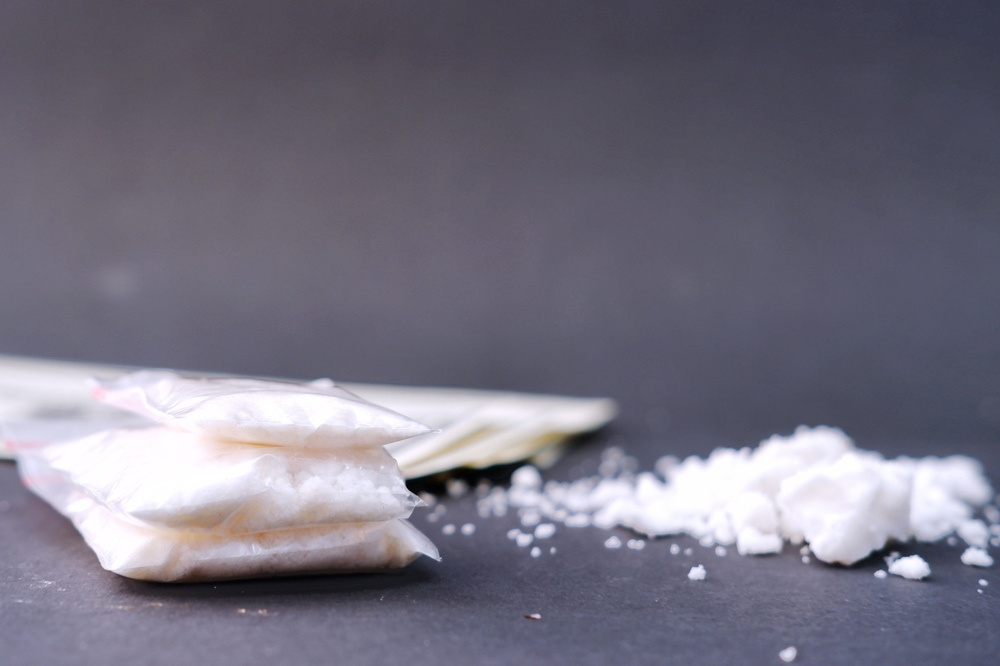Last Updated:
June 19th, 2025
In England and Wales, the number of cocaine-related deaths has been increasing significantly over the last 10 years. Rising in prevalence across the country over the last five decades, cocaine has become one of the most commonly used and abused drugs.
Since it first started creeping its way into 20th-century society, cocaine has been used for everything from medical treatment to early formulas of Coca-Cola, but thankfully, today we better understand the dangers surrounding it.
But what type of drug is cocaine? And why are its effects so sought after by people from all walks of life?
This article aims to answer some of the mysteries of understanding cocaine and recognising the damage it can cause.

What is cocaine?
Cocaine is a powerful and addictive stimulant drug that is the end product of processing coca plants native to South America. While cocaine is found in many countries across the continent, Colombia, Peru, and Bolivia are the top three cocaine-producing countries in the region.
When sold on the street, cocaine can be found in two forms, the more common “powder” form and “crack” cocaine, the result of processing the powder with a smokable substance like baking soda or ammonia.
Cocaine’s physical appearance is a fine white crystalline powder, sold in small packets or vials. It doesn’t come with a noticeable smell but is known to have a bitter taste. Visibly cocaine would be hard to tell apart from baking soda, but its innocuous appearance belies the dangerous and potent effects on the body and mind.
Cocaine is known for its rapid onset of pleasurable effects, causing changes in the brain in less than a few minutes. However, these rapid highs come with massive risks to the body and mind in the long run.
You might have heard cocaine mentioned quietly at parties or social get-togethers under many different names. It is sometimes labelled the drug of the 80s and 90s for its notorious links to the pop-culture of the time and its devastating development into crack or “freebase” cocaine which caused major problems during those decades. Some of the most common street names for powder cocaine are:
| Common street names for cocaine | ||
| Blow | Charlie | Coke |
| Flake | Sniff | Snow |
How is cocaine classified?
Cocaine is classified as a stimulant drug, meaning it increases activity in the central nervous system. It speeds up communication between the brain and body, speeding up your thoughts, speech and actions. Generally speaking, compared to other stimulants like methamphetamine and amphetamines, cocaine’s effects are a bit shorter-lived and more intense.
Cocaine’s chemical structure and its effects
Cocaine is made up of carbon, hydrogen, nitrogen and oxygen atoms, forming the end result of a crystalline alkaloid. It also acts as an anaesthetic, affecting the impulses in your nerves, like in the mucous membranes of the eye, nose and throat.
How is cocaine used?
Cocaine is most commonly snorted or rubbed into a person’s gums, with both methods having similar effects. On a night out you might see it snorted with a rolled-up bank note or a thin key. It has long been seen as the most popular club drug and its prominence across the 80s and 90s created associations of the drug with razor blades for fine cutting and mirrors for spreading the lines of powder.
In less common cases, cocaine is diluted in water and injected. Injection speeds up and intensifies the onset of effects, carrying a high risk of overdose and the bleak realities of infection and transmission of a host of diseases.
When mixed and heated with ammonia or baking soda, it’s smoked through a glass pipe. The onset of effects arrive more quickly and are intensified, increasing the likelihood of addiction and dependency.
Short-term effects of cocaine
Cocaine’s short-term effects are almost immediate and can be intense. It rapidly affects the brain and creates a surge in dopamine levels which creates a powerful but fleeting sense of euphoria. The body constricts its blood vessels and you might find a decrease in appetite and need for sleep.
Cocaine can cause people to behave very out of character. They can become hyperactive, restless, over-excited and in some cases, aggressive or violent. All of these effects can be heightened when cocaine is taken with alcohol or other drugs which is very common. Mixing cocaine and alcohol can be especially dangerous, as mixing the two creates a dangerous psychoactive chemical called cocaethylene. This chemical has been linked with seizures and liver damage and carries an 18- to 25-fold increase over cocaine use alone in risk for immediate deaths.
Long-term effects of cocaine
The long-term effects of cocaine use can be incredibly bleak. Over long periods of cocaine abuse, the drug is linked with many cardiovascular diseases, as well as problems with nasal damage like chronic nosebleeds and your sense of smell being affected.
A long-term user’s mental health suffers greatly too, with heightened levels of anxiety and paranoia. Its pleasurable effects lend the drug to repeated usage and cocaine addiction, which, over time, can form psychiatric conditions like psychosis and delusions.
Cocaine addiction
Cocaine addiction comes from its pleasurable effects, especially in the first few instances of use. Highs never come without lows, though, and very often, habits and dependencies are formed when someone is using them to try and cushion the blow of the unpleasant but inevitable “comedown.”
Its prevalence as a party and club drug keeps the drug circulating in too many social circles across the country. Cocaine use disorder is a very real thing, where control of the amount and frequency of cocaine is lost. Cocaine use disorder comes with frightening physical and mental dependencies, at which point stopping causes major cocaine withdrawal symptoms.
Once in this vicious cycle, it’s not always clear how to quit cocaine. Recognising the signs and symptoms of cocaine addiction might mean the difference between the life and death of a loved one. Some of the behavioural signs of cocaine addiction you might recognise in a loved one are:
- Talking about cocaine a lot or being defensive when cocaine use is mentioned.
- Neglecting responsibilities at work, school or home.
- Social withdrawals and secrecy about what they’re doing.
- New financial problems as the drug is relatively expensive.
There might even be some visible signs and symptoms you can keep an eye out for in a friend or loved one. Some of the signs might show as:
- Nasal issues like frequent nosebleeds and runny or blocked nostrils.
- Rapid weight loss and decreased appetite.
- Dilated pupils and rapid shifts in mood or energy levels.
- Track marks on arms or other injection sites.
Legal and social implications of cocaine abuse
In the UK, cocaine carries harsh penalties of up to 7 years for possession through its Class-A classification. For supply and manufacture, penalties are even more serious, with the maximum sentence for trafficking as life imprisonment.
As it continues to creep into broader and broader social circles, its societal implications are morphing, too. Habitual use often leads to broken relationships and withdrawal from everyday life, as the user chooses to isolate themselves. They may turn to crime to fund their addiction and this can put them in even more trouble.
Cocaine abuse and addiction in the UK
The UK’s relationship with cocaine implies that it’s becoming more readily available and accessible. London has the highest rate of cocaine abuse, with more than 200,000 doses taken every day. This is reflected across the UK, ranking the nation in the global top 3 at 2.67%.
Which is where we come in.
I want cocaine out of my life. What can I do?
If you or someone near and dear to you has a cocaine addiction, UKAT is here to offer a way out. We have comprehensive cocaine addiction treatment programmes that can support you through your recovery and guide your loved ones through the process.
No one has to suffer a cocaine addiction alone. Real changes start from the inside and the journey to recovery is only one decision away. Contact us for professional support and to find out exactly how to start your journey to a healthier, cocaine-free life.
(Click here to see works cited)
- Smith, Paul Breen and Rebecca. “Deaths Related to Drug Poisoning in England and Wales: 2022 Registrations.” Deaths Related to Drug Poisoning in England and Wales – Office for National Statistics, Office for National Statistics, 19 Dec. 2023, www.ons.gov.uk/peoplepopulationandcommunity/birthsdeathsandmarriages/deaths/bulletins/deathsrelatedtodrugpoisoninginenglandandwales/2022registrations.
- Zandt, Florian, and Felix Richter. “Infographic: Where Cocaine Is Produced and Where It’s Consumed.” Statista Daily Data, 26 June 2024, www.statista.com/chart/31551/coca-leaf-producing-countries-worldwide-and-cocaine-users-by-region.
- Cocaine Abuse & Addiction, www.nyc.gov/site/doh/health/health-topics/cocaine-abuse-and-addiction.page. Accessed 21 July 2024.
- “Cocaine.” Encyclopædia Britannica, Encyclopædia Britannica, inc., 19 July 2024, www.britannica.com/science/cocaine.
- Ramo DE, Grov C, Delucchi KL, Kelly BC, Parsons JT. Cocaine use trajectories of club drug-using young adults recruited using time-space sampling. Addict Behav. 2011 Dec;36(12):1292-300. doi: 10.1016/j.addbeh.2011.08.003. Epub 2011 Aug 24. PMID: 21907497; PMCID: PMC3184016.
- Pergolizzi J, Breve F, Magnusson P, LeQuang JAK, Varrassi G. Cocaethylene: When Cocaine and Alcohol Are Taken Together. Cureus. 2022 Feb 22;14(2):e22498. doi: 10.7759/cureus.22498. PMID: 35345678; PMCID: PMC8956485.
- Andrews P. Cocaethylene toxicity. J Addict Dis. 1997;16(3):75-84. doi: 10.1300/J069v16n03_08. PMID: 9243342.
- Cardiovascular Effects of Cocaine | Circulation, www.ahajournals.org/doi/10.1161/circulationaha.110.940569. Accessed 22 July 2024.
- Cocaine Users | London City Hall, www.london.gov.uk/who-we-are/what-london-assembly-does/questions-mayor/find-an-answer/cocaine-users-0. Accessed 22 July 2024.
- Most Cocaine Use by Country 2024, worldpopulationreview.com/country-rankings/most-cocaine-use-by-country. Accessed 22 July 2024.



